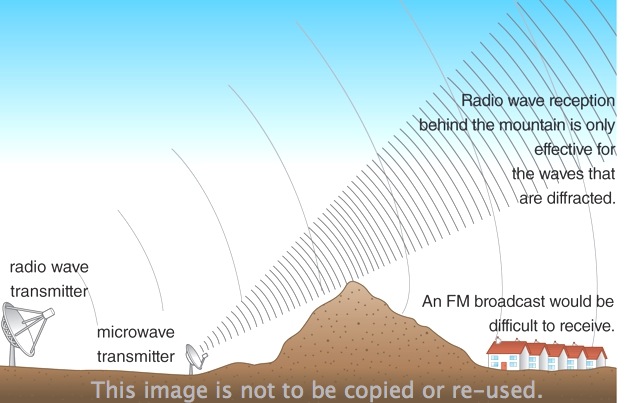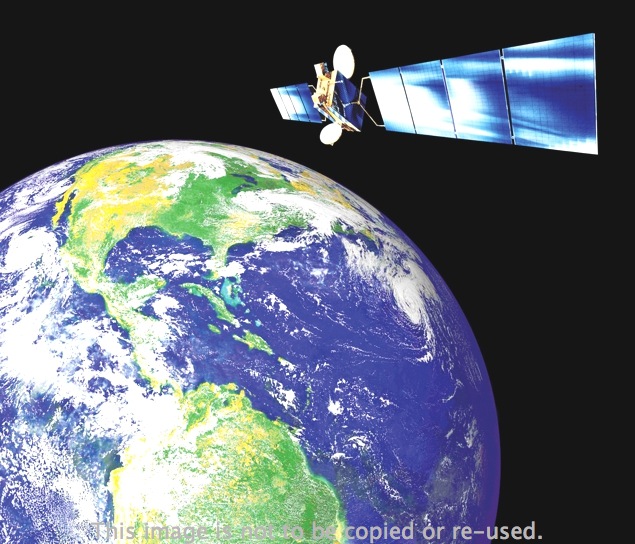One of the layers in the Earth’s atmosphere is called the ionosphere. Radio waves can be reflected from the ionosphere. Water is also able to reflect radio waves, but land masses are not such good reflectors.
The propagation of radio signals from one place to another because of reflection from the ionosphere is known as sky wave propagation. Radio waves in the ionosphere behave in a similar way to light rays in an optical fibre – they undergo total internal reflection.
As a radio wave travels up in the ionosphere, it passes from a denser to a less dense medium. It continuously bends away from its path until it is totally reflected back to Earth. Coupled with reflection from the oceans, radio signals can be received well beyond line of sight.
Microwaves are not reflected back to the surface of the Earth. They pass through the ionosphere and are received by satellites orbiting the Earth. The satellite amplifies the signal and then re-transmits the signal back to Earth.
Radio waves are diffracted when they meet an obstruction. The diffraction is only significant if the size of the obstacle is similar to the wavelength (see Figure 7).



